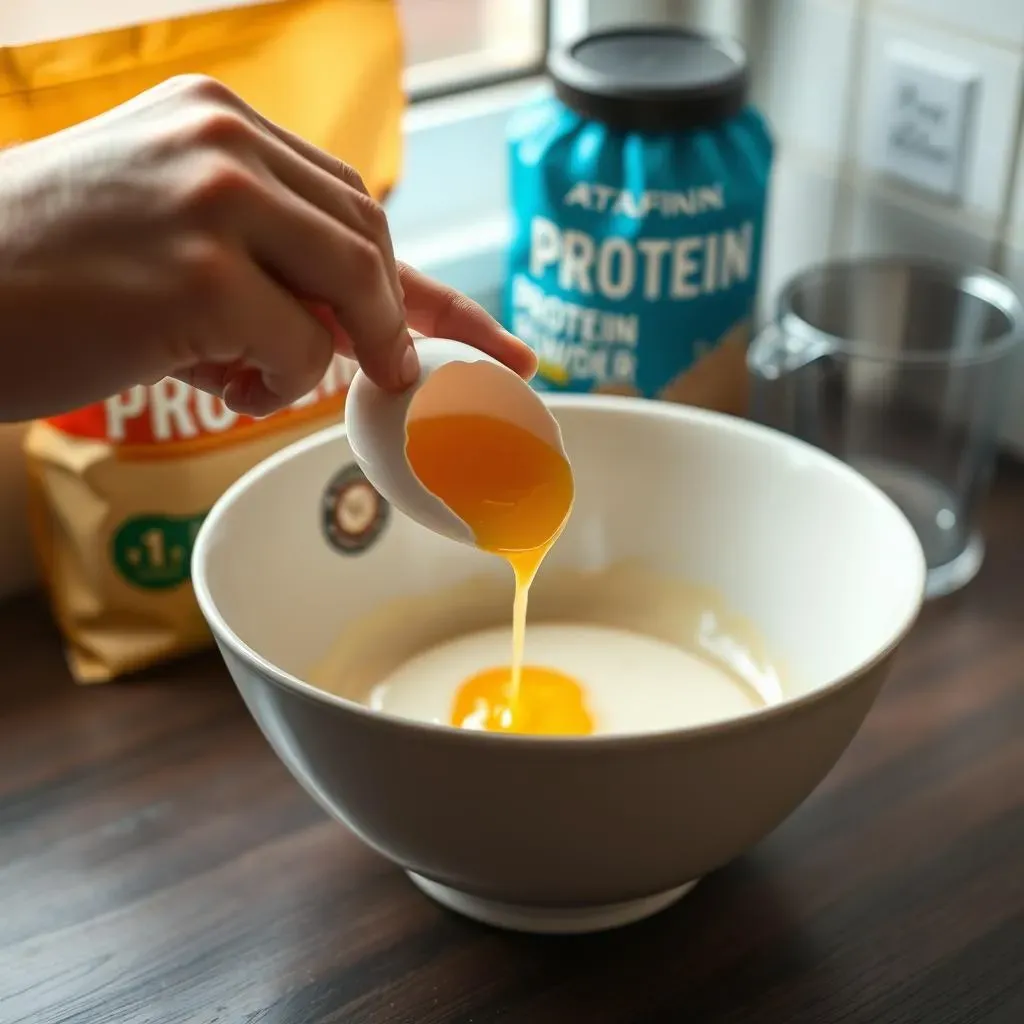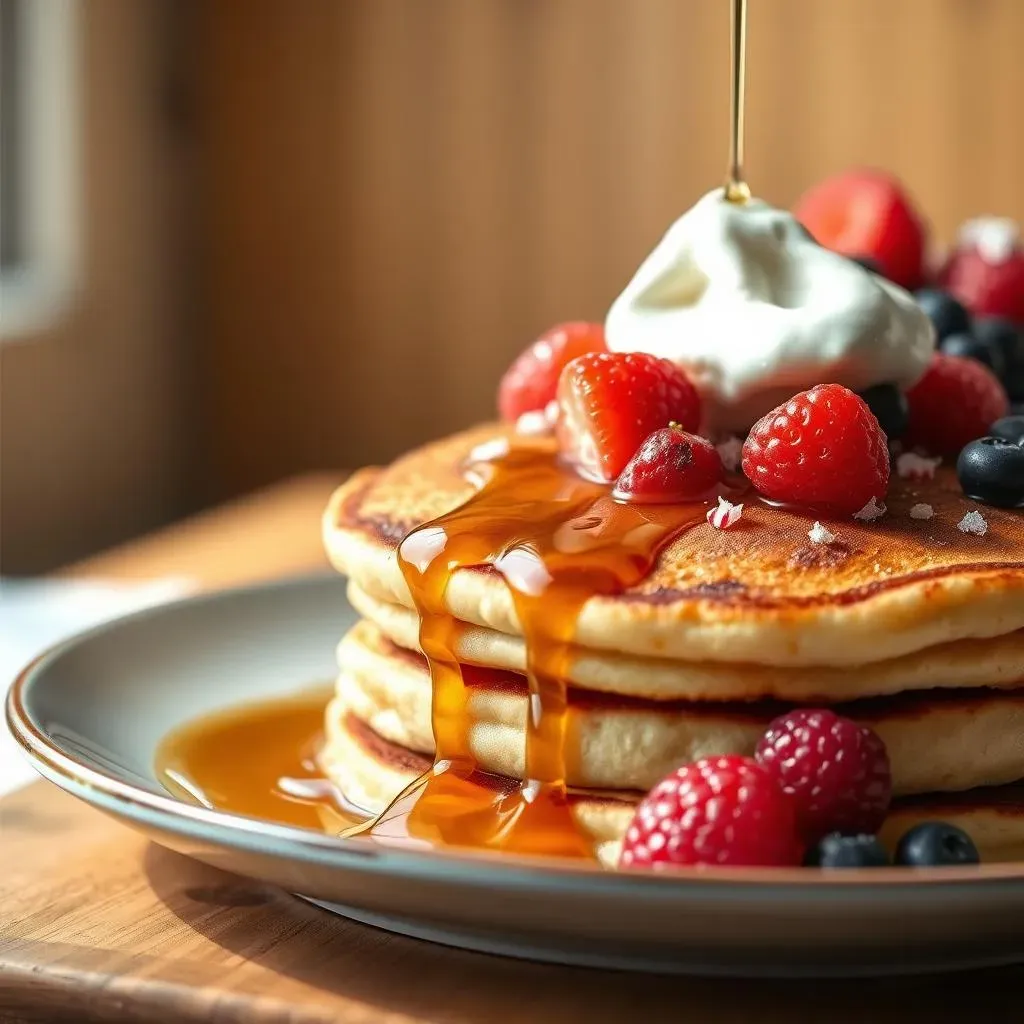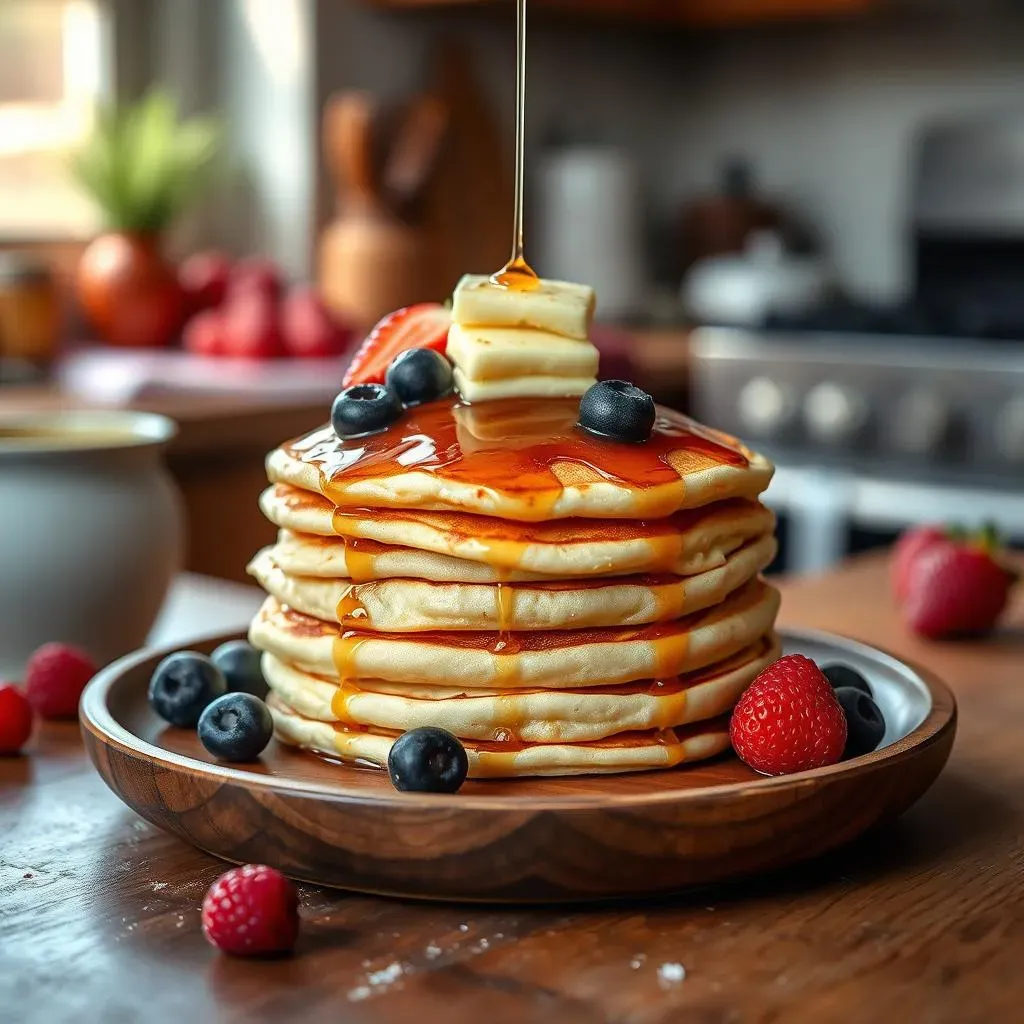Table of Contents
So, you've made protein pancakes, and they're drier than the Sahara Desert? Don't worry, you're not alone! Many people struggle with this common baking problem. This article will unravel the mystery behind why your protein pancakes are dry, providing you with the knowledge and tools to achieve fluffy, delicious results every time. We'll explore the science behind the dryness, examining the common culprits like the type of protein powder you use, the liquid-to-dry ratio in your batter, and even your cooking technique. We'll then dive into practical troubleshooting tips, offering clear, step-by-step solutions to fix your dry pancake dilemma. Finally, we'll explore ingredient swaps and recipe adjustments to ensure your next batch of protein pancakes is perfectly moist and satisfying. Get ready to transform your breakfast game! Let's tackle that burning question: "Why are my protein pancakes dry?" and turn those dry disappointments into delightful treats. Prepare to become a protein pancake pro!
The Science of Dry Protein Pancakes: Understanding the Culprits

The Science of Dry Protein Pancakes: Understanding the Culprits
The Protein Powder Puzzle
Let's be honest, protein powder is the star (or sometimes the villain!) of the protein pancake show. Different protein powders absorb liquids differently. Whey protein, for example, can be quite thirsty, soaking up liquid and potentially leaving your batter dry if you don't adjust the recipe accordingly. Think of it like this: some sponges are super absorbent, others less so. Whey can be a super-absorbent sponge, needing extra liquid to stay fluffy. If you're using whey, check out our guide to whey protein pancake recipes for tips on getting that perfect consistency. Casein protein, on the other hand, tends to be a bit more forgiving. It's like a less thirsty sponge, requiring less liquid to achieve the right texture. Experimenting with different protein powders and adjusting your recipe based on their unique absorption properties is key to mastering the perfect protein pancake.
The amount of protein powder you add also matters. Too much protein powder relative to the other ingredients, like flour or oats, will inevitably result in a drier pancake. It's like trying to build a sandcastle with too much sand and not enough water – it'll crumble! Finding the right balance is crucial. If you're looking for a delicious and easy recipe, try our easy protein pancake recipe – it's a great starting point for mastering your protein pancake game.
Protein Powder Type | Liquid Absorption | Pancake Texture Tendency |
|---|---|---|
Whey | High | Dry if not enough liquid |
Casein | Moderate | More forgiving |
Soy | Moderate | Can be slightly dry |
The Liquid-to-Dry Ratio: A Balancing Act
The ratio of liquid to dry ingredients is absolutely crucial. Think of it as a dance – you need the right balance between the two to create a harmonious pancake. Too much dry ingredient will lead to dryness, like trying to bake a cake with too much flour. Too little dry ingredient, and your pancakes will be too thin and flimsy. Aim for a batter that's slightly thicker than regular pancake batter; it should be pourable but not runny. If your batter seems too thick, add a little more liquid, a tablespoon at a time, until you achieve the desired consistency. If it's too thin, add a bit more dry ingredients, again, a tablespoon at a time. This is the art of the perfect pancake!
The type of liquid also plays a role. Milk, water, or almond milk all offer different moisture levels and affect the final texture. Milk tends to create a richer, more tender pancake, while water can result in a slightly drier one. For a creamier pancake, consider using almond milk. We have a great recipe using almond milk which you might find useful: Almond Milk Protein Pancakes. Experiment with different liquids to see what works best for your taste and desired texture. Remember, finding the perfect balance is a journey, not a destination! Keep experimenting, and you'll soon master the art of the perfect protein pancake.
- Use a slightly thicker batter than regular pancakes.
- Add liquid a tablespoon at a time until the desired consistency is reached.
- Experiment with different types of liquid (milk, water, almond milk).
Troubleshooting Techniques: Fixing Dry Protein Pancakes

Troubleshooting Techniques: Fixing Dry Protein Pancakes
Adjusting Liquid Levels
If your pancakes are dry, the first thing to check is the liquid content of your batter. Think of it like adding water to a too-dry cement mix – it's crucial for the right consistency! Start by adding a tablespoon or two of liquid at a time, mixing thoroughly after each addition. Milk, water, or even yogurt can work wonders. Don't be afraid to experiment! For a richer flavor and added moisture, try adding a dollop of Greek yogurt—it's a game-changer. If you're looking for a recipe that specifically addresses this issue, check out our Oat Protein Pancakes recipe which offers a balanced approach to moisture.
Another common culprit is overmixing. Overmixing develops the gluten in any flour you might be using, leading to a tougher pancake. Mix just until the ingredients are combined—a few lumps are okay! Overmixed batter is like a tight fist, preventing the pancake from rising and staying fluffy. A gently mixed batter is more like an open hand, allowing for a lighter, airier texture. We have a great Fluffy Protein Pancakes recipe that emphasizes gentle mixing.
- Add liquid 1 tablespoon at a time.
- Mix gently until just combined.
- Consider adding Greek yogurt for extra moisture.
Cooking Techniques: Low and Slow
The way you cook your pancakes also impacts their moisture level. High heat cooks the outside too quickly before the inside is fully cooked, leading to dryness. Think of it like grilling a steak – you want a nice sear but also a juicy interior. Cook your protein pancakes over medium-low heat, allowing them to cook through gently. This slow cooking process ensures even heating and prevents dryness. You should see bubbles forming on the surface before flipping; this indicates the pancake is ready to turn. If you're looking for some advanced techniques, take a look at our Protein vs. Regular Pancakes article, which delves into cooking methods.
Another tip is to cover the pan with a lid while cooking. Covering the pan traps moisture, preventing the pancakes from drying out. It's like creating a mini-steam bath for your pancakes! This method helps cook the inside evenly while keeping the outside from becoming overly crisp. This is especially helpful when using protein powders that tend to absorb more liquid. A helpful tip to remember is to never press down on the pancakes while they are cooking! This will force out moisture and result in flat, dry pancakes. For additional recipe inspiration, you may want to explore our Post-Workout Protein Pancake Recipe.
Cooking Method | Advantages | Disadvantages |
|---|---|---|
Medium-low heat | Even cooking, prevents dryness | Takes longer to cook |
Covered pan | Traps moisture, prevents dryness | May result in slightly softer pancakes |
Recipe Adjustments and Ingredient Swaps for Perfect Pancakes

Recipe Adjustments and Ingredient Swaps for Perfect Pancakes
Adding Moisture Boosters
Let's talk about adding extra moisture to your batter. Think of it as giving your pancakes a hydration boost! A simple addition of applesauce, mashed banana, or even a little extra milk can work wonders. Applesauce, in particular, adds moisture without significantly altering the flavor. It’s like a secret weapon for fluffy pancakes. One tablespoon at a time is all it takes to bring your pancakes back from the brink of dryness. For more ideas on adding extra moisture, check out our Protein Pancakes with Berries recipe—the berries add both flavor and moisture.
Yogurt is another fantastic ingredient to add moisture. Greek yogurt, in particular, adds a creamy texture and subtle tang that complements the sweetness of the pancakes. It's like a secret ingredient that elevates your pancakes to a whole new level. Two to three tablespoons of Greek yogurt can make a significant difference, especially when using protein powders that tend to be drier. If you're looking for a recipe that's both healthy and delicious, our Vegan Protein Pancake recipe uses yogurt to great effect.
- Applesauce (1-2 tbsp)
- Mashed banana (1/4-1/2)
- Greek yogurt (2-3 tbsp)
- Extra milk (1-2 tbsp)
Reducing Dry Ingredients
Sometimes, the problem isn't a lack of moisture, but an excess of dry ingredients. Too much protein powder, flour, or other dry ingredients can suck up all the moisture, leaving your pancakes dry and crumbly. Think of it like trying to build a sandcastle with too much sand. It's all about finding that perfect balance! Start by slightly reducing the amount of protein powder in your recipe—perhaps 10-20%. You can also reduce other dry ingredients like flour or oat flour, if you're using them. Remember, you can always add more later if needed, but it's harder to take away once it's mixed.
Consider substituting some of the dry ingredients with wet ones. For example, you could replace some of the flour with applesauce or mashed banana. These substitutions not only add moisture but also contribute to a richer, more flavorful pancake. They're like secret ingredients that transform your pancakes into something truly special. For a richer and moist pancake, you can try incorporating some oil or melted butter into the batter. This not only adds moisture but also enhances the flavor and texture of the pancakes. If you're unsure about the best approach, take a look at our comprehensive Protein Pancake Mix Comparison article for detailed ingredient analysis.
Ingredient | Potential Substitution |
|---|---|
Flour | Applesauce, mashed banana |
Protein Powder | Reduce amount, or use a blend |
Experimenting with Different Protein Powders
Different protein powders have different properties, and some are more prone to creating dry pancakes than others. Whey protein, for example, tends to be drier than casein protein. Think of it like this: some sponges absorb more water than others. Whey protein is a thirsty sponge, whereas casein is more forgiving. If you’re consistently having problems with dry pancakes, try switching to casein protein or a blend of whey and casein. Casein tends to create richer, moister pancakes, while whey can sometimes lead to a drier texture. If you're looking for a specific recipe that uses casein, check out our Casein Protein Pancake recipe for optimal results.
Another approach is to experiment with different brands or types of protein powder. Some brands are formulated differently, and some types of protein powder (like brown rice protein) tend to be more hydrating than others. The key is to experiment and find what works best for you and your taste. Each protein powder is unique, and finding the right one for your needs can take some trial and error, but it's worth the effort. Don’t be afraid to try different brands to see which one gives you the best results. A good starting point for finding the perfect blend is our guide to the Best Protein Pancake Mixes.
- Try casein protein or a whey/casein blend.
- Experiment with different brands and types of protein powder.
- Read reviews and compare ingredient lists.